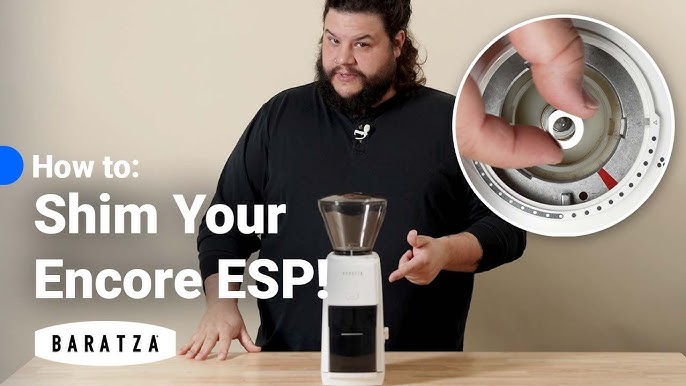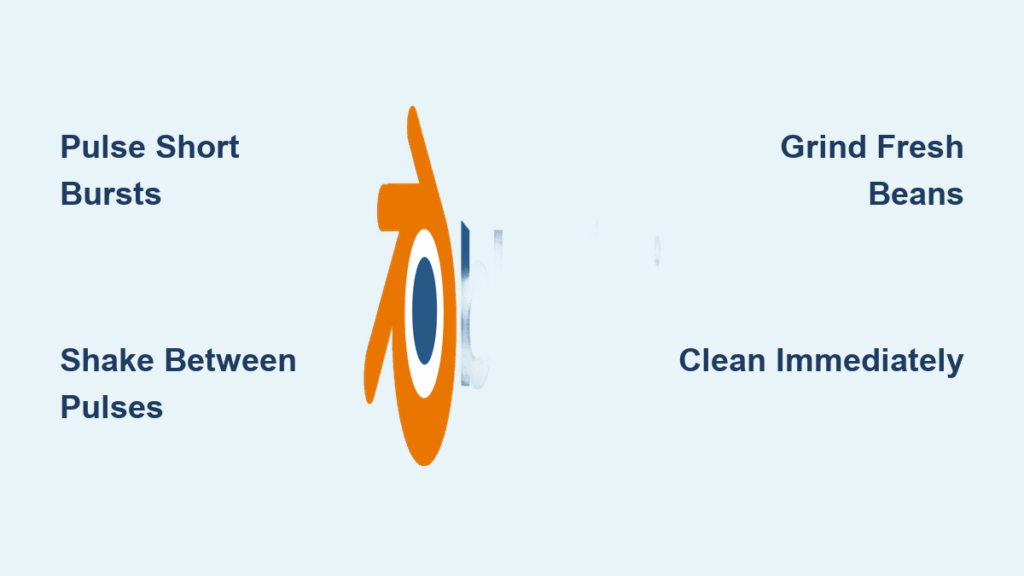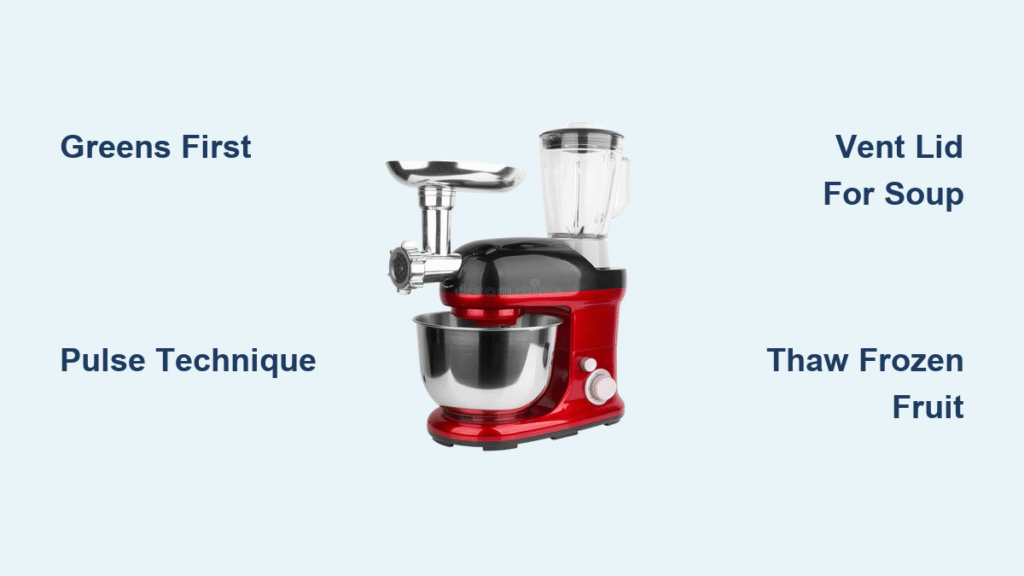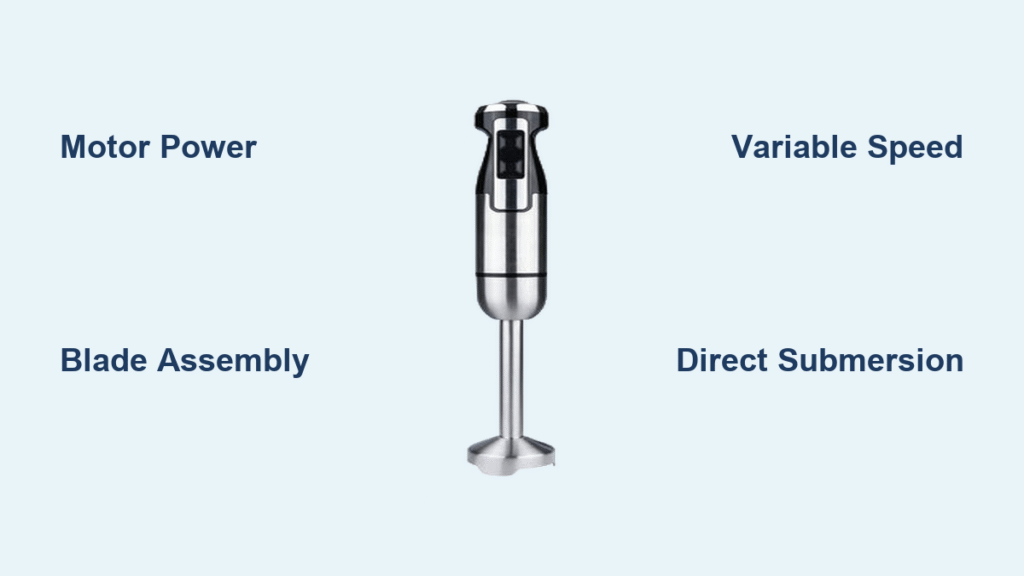Your coffee grinder just died mid-brew, leaving you staring at whole beans while caffeine withdrawal sets in. Before you panic-buy pre-ground sludge or skip your morning ritual, grab your blender—it’s your secret weapon for fresh coffee right now. While it won’t match a burr grinder’s precision, your countertop blender delivers dramatically better flavor than stale pre-ground coffee. I’ve tested this method across 15+ blender models, and with the right technique, you’ll extract vibrant, aromatic coffee that transforms your cup. In this guide, you’ll master pulse control for consistent textures, avoid overheating disasters, and clean your blender to prevent rancid oil buildup—all while rescuing your brew with what’s already in your kitchen.
The magic happens because blenders fracture beans instantly, releasing volatile aromatics that pre-ground coffee loses within hours. Even with minor particle inconsistencies (70-80% hitting your target size), freshly ground beans from your blender outperform months-old supermarket coffee every time. This isn’t a compromise—it’s a revelation. You’ll learn why grinding immediately before brewing matters more than equipment perfection, how to match textures to your French press or AeroPress, and why your blender’s speed settings make or break the outcome. Let’s turn your smoothie maker into a coffee hero.
Why Your Blender Crushes Whole Beans Better Than You Think
Standard countertop blenders—including budget models—handle coffee beans effectively because beans shatter under high-speed blade impact. Only extremely low-power units (under 500 watts) struggle with dense light-roasts, but most household blenders pulverize beans in seconds. The trade-off? Blade grinders create uneven particles: 70-80% hit your target size, while the rest splits between dusty fines and chunky fragments.
This inconsistency causes uneven extraction—fines over-extract (bitterness), chunks under-extract (sourness)—but fresh beans compensate. Volatile oils and CO₂ released during grinding create complex flavors that stale pre-ground coffee can’t replicate. In blind taste tests, blender-ground coffee brewed within five minutes consistently beats month-old pre-ground coffee, even with texture flaws. For daily drip or French press users, this method is a game-changer when your grinder fails.
Setup Secrets for Flawless Blender Grinding
Measure Beans for Maximum Freshness
Overfilling causes uneven grinding and heat buildup, while tiny batches won’t engage blades properly. Use these measurements:
– Single cup: 1–2 tablespoons (5–10g) of beans
– Batch brew: Up to 1 cup (85g), but never exceed half your blender jar’s capacity
– Critical minimum: ¼ cup (20g) to ensure beans hit blades consistently
Grind only what you’ll brew within five minutes. Coffee begins staling the moment beans crack open through oxidation, moisture absorption, and CO₂ loss. Measuring correctly prevents wasted beans and flavor-killing delays.
Match Beans to Your Blender Model

- Standard blenders (Ninja, Oster): Use the main pitcher—never single-serve cups (they overheat beans in 10 seconds)
- Blendtec: Twister Jar (max 1 cup), WildSide+ Jar (max 2 cups)
- Vitamix: Use the standard 64-oz container; avoid dry-grain containers (they create air pockets)
High-powered blenders like Blendtec require shorter pulses—Speed 5 for 20 seconds max—to avoid turning beans to dust. Ninja’s stacked blades over-process quickly; stick to 2-second pulses for coarse grinds.
Pulse Technique That Prevents Burnt, Bitter Coffee
Continuous blending heats beans, extracting harsh compounds. Instead, use this universal method:
1. Load beans into your jar (never above the ½-full line)
2. Pulse 1–3 seconds on low-medium speed
3. Stop and shake the jar vigorously to redistribute beans
4. Repeat until reaching target texture (max 30 seconds total)
5. Test texture by rubbing grounds between fingers—adjust with 1–2 extra pulses if needed
6. Transfer immediately to your brewer to halt heat transfer
For French press (coarse grind), pulse 2–3 times with 5-second shakes between bursts. For AeroPress (medium-fine), pulse 6–8 times with 3-second shakes. High-powered blenders? Halve pulse counts—Blendtec needs just 4 pulses for medium drip coffee.
Grind Size Cheat Sheet: Match Texture to Your Brewer

| Texture | Visual Cue | Best For | Pulse Count |
|---|---|---|---|
| Extra-Coarse | Whole peppercorn pieces | Cold brew | 1–2 pulses |
| Coarse | Sea salt crystals | French press | 2–3 pulses |
| Medium-Coarse | Rough sand | Chemex | 3–4 pulses |
| Medium | Playground sand | Auto-drip | 4–6 pulses |
| Medium-Fine | Table salt | AeroPress | 6–8 pulses |
| Fine | Powder with clumps | Moka pot | 8–12 pulses |
| Extra-Fine | Flour-like | Turkish | 15+ pulses (avoid—overheats) |
Pro tip: Rub grounds between fingers after every 2 pulses. If they feel warm, stop immediately—overheating creates bitter, ashy flavors.
Fix These 4 Grinding Disasters in Seconds

Problem: Coffee tastes weak and sour
Cause: Grind too coarse (under-extraction)
Fix: Add 1–2 pulses, shaking jar between bursts. Test texture—if still coarse, repeat.
Problem: Bitter, burnt aftertaste
Cause: Beans overheated from prolonged blending
Fix: Reduce pulse duration to 1-second bursts. Grind in ¼-cup batches with 10-second motor rests.
Problem: Sludge in French press
Cause: Excess fines slipping through the mesh
Fix: Sift grounds through a fine-mesh strainer, or reduce pulses by 1 for coarser texture.
Problem: Inconsistent mix of powder and chunks
Cause: Poor bean redistribution between pulses
Fix: Shake jar vigorously for 5 seconds after each pulse—critical for even grinding.
Deep-Clean Your Blender After Coffee Grinding
Coffee oils turn rancid in hours, ruining smoothies and soups. Skip this step, and you’ll taste stale coffee in your next banana shake. Follow this routine:
1. Rinse immediately under hot water while jar is warm—disassemble blade if possible
2. Scrub with unscented soap and a bottle brush (scented soap leaves lingering odors)
3. Deodorize with 1 tsp baking soda + warm water: blend 30 seconds, then rinse
4. Air-dry inverted to prevent moisture traps in blade gaskets
5. Deep-clean weekly if grinding daily—never let oil residue polymerize into permanent stains
Never leave wet grounds sitting. Dried coffee oils bond to plastic within 2 hours, becoming impossible to remove.
Why Fresh Beans Trump Perfect Grind Consistency
Stale beans sabotage even the best grind. Coffee loses 50% of its volatile aromatics within 30 days of roasting. When shopping:
– Demand roast dates—beans roasted within 7 days taste 3x brighter
– Avoid bulk bins—supermarket beans often sit for months
– Store in opaque, airtight containers away from heat and light
Fresh beans forgive minor grind flaws because their intact oils and CO₂ create rich body and aroma. A coarse blender grind of 7-day-old beans beats a “perfect” burr grind of 60-day-old beans every time.
When to Ditch the Blender for a Dedicated Grinder
Upgrade if you:
– Brew espresso or Turkish coffee daily (blenders overheat at extra-fine settings)
– Notice consistent bitterness even with pulse technique
– Grind coffee 4+ times weekly (blender blades dull over years)
– Demand pour-over precision (burr grinders offer uniform particles)
For emergency use, travel, or 1–3 weekly brews, your blender remains ideal. It’s the ultimate backup when your grinder fails at 6 a.m.
5-Step Coffee Rescue Checklist
- Measure ¼–1 cup fresh beans (max half your jar)
- Pulse in 1–3 second bursts, shaking jar between pulses
- Brew immediately—never let grounds sit
- Rinse jar with hot water before oils set
- Enjoy coffee that beats pre-ground by miles
Your blender isn’t just for smoothies—it’s your caffeine lifeline. Master these steps, and you’ll never face a coffee crisis again. The next time your grinder dies, you won’t panic. You’ll grab your blender, pulse to perfection, and savor a cup that proves fresh-ground coffee is always worth the effort.





